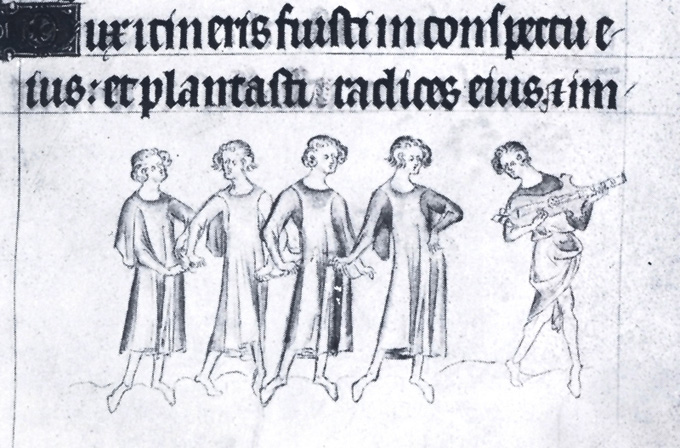
Queen Mary’s Psalter St Edmund (detail) 1553
Quarton or Charonton, Enguerrand (c. 1410–c. 1461). French painter, born at Laon in the north, but working at Avignon from 1447 to 1461. 2 paintings are documented: Virgin of Mercy and the large-scale altarpiece Coronation of the Virgin. The imaginative conception and detail of the latter show evidence of great talent.
Queen Mary’s Psalter (c. 1330; B.M., London). Masterpiece of the East Anglian school of illumination; it was presented to Queen Mary in 1553. It contains 200 exquisite tinted drawings of scenes from Old Testament history, a calendar showing the signs of the zodiac and the monthly occupations, and a series of tinted marginal drawings of sports, pastimes and animal lore.

Queen Mary’s Psalter St Edmund (detail) 1553
Quercia Jacopo della (c. 1374–1438). Sienese sculptor, one of the most notable early 15th-c. Italian sculptors; his work uniquely combines classical and non-classical elements. He entered the competition for the 1st bronze doors for the Florence Baptistery (won by Ghiberti) but his entry has not survived. Other early works include the tomb of Ilaria del Carretto, Lucca cathedral (c. 1406) and the Fonte Gaia, Palazzo Pubblico, Siena. He worked with Ghiberti and Donatello on reliefs for Siena Baptistery (1417–31) and from 1425 executed reliefs which ill. scenes from Genesis for the doorway of S. Petronio, Bologna and figures in the lunette. He had a strong feeling for linear design and his style evidences familiarity with N. Italian sculpture.
Quidor John (1801–81). U.S. painter of portraits and humorous scenes from the books A History of New York and The Sketch-book of Geoffrey Crayon, Gent. by Washington Irving.